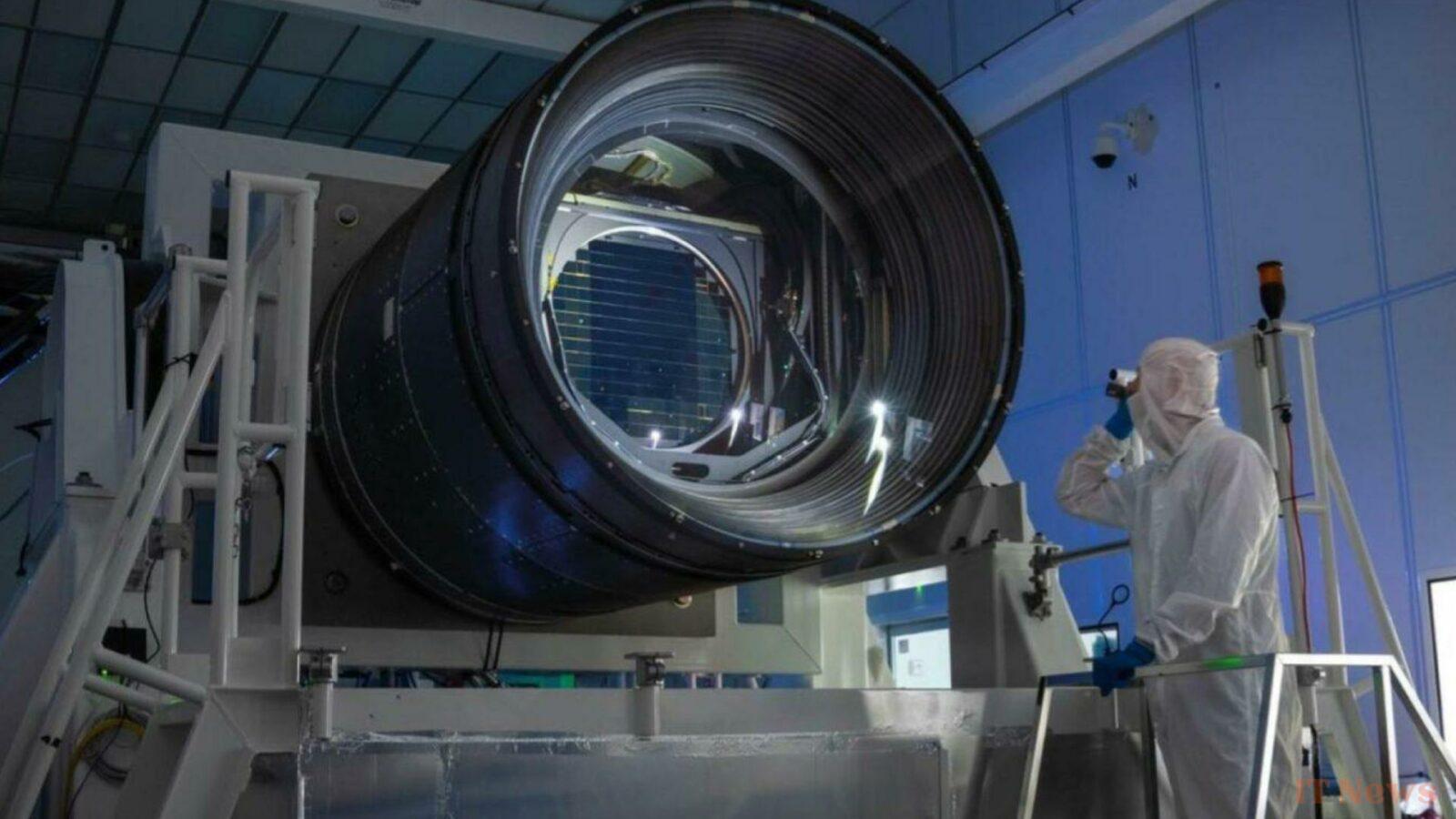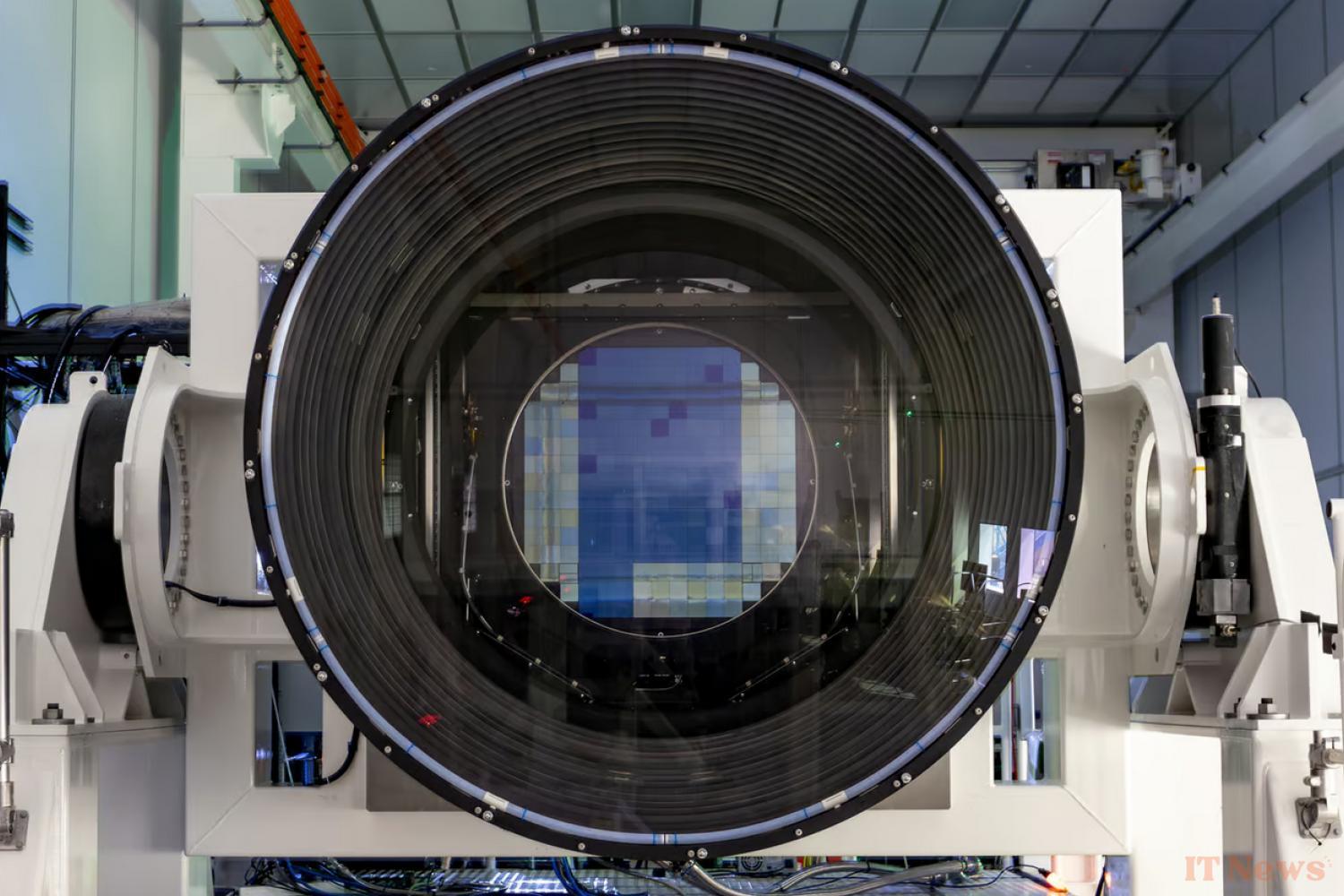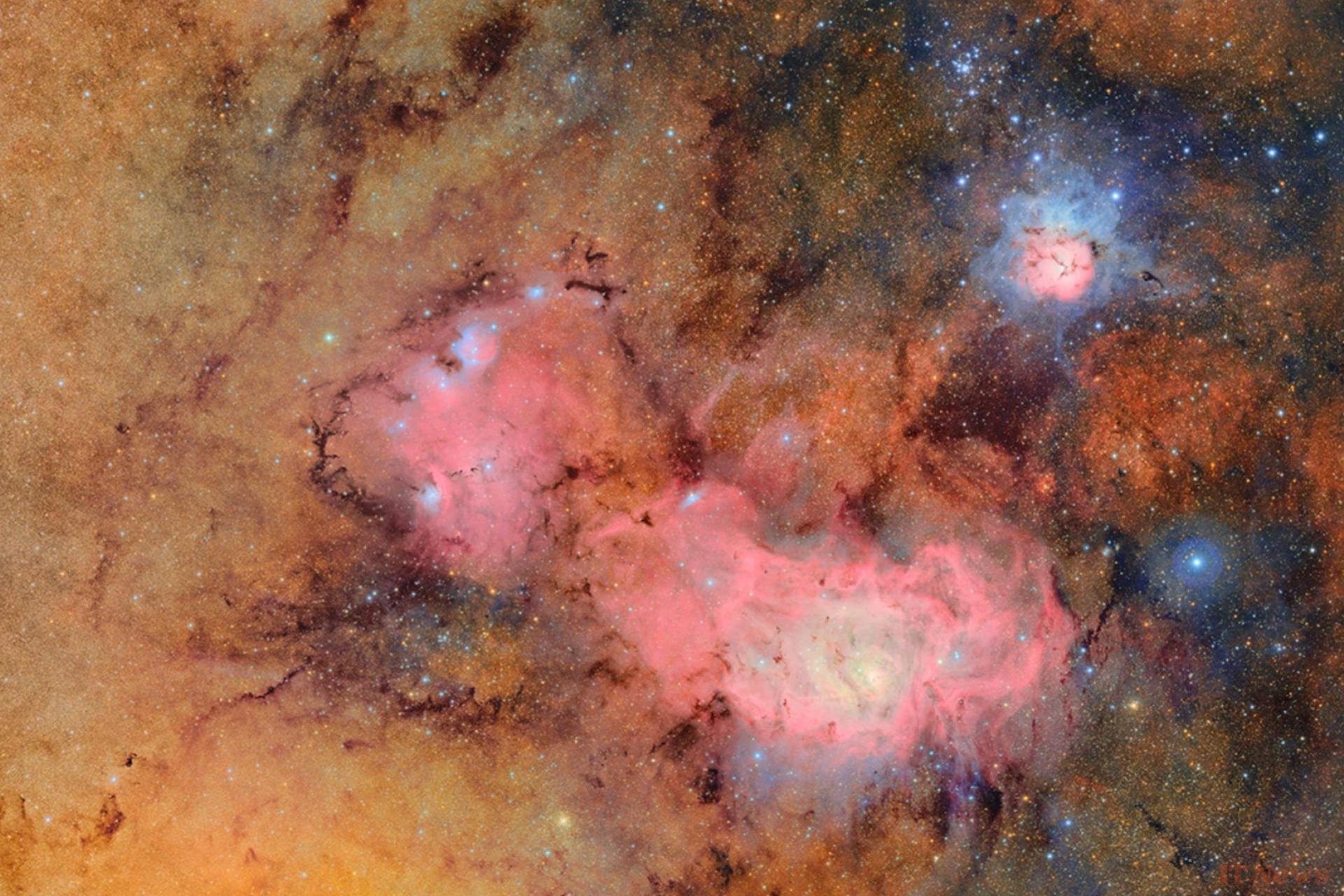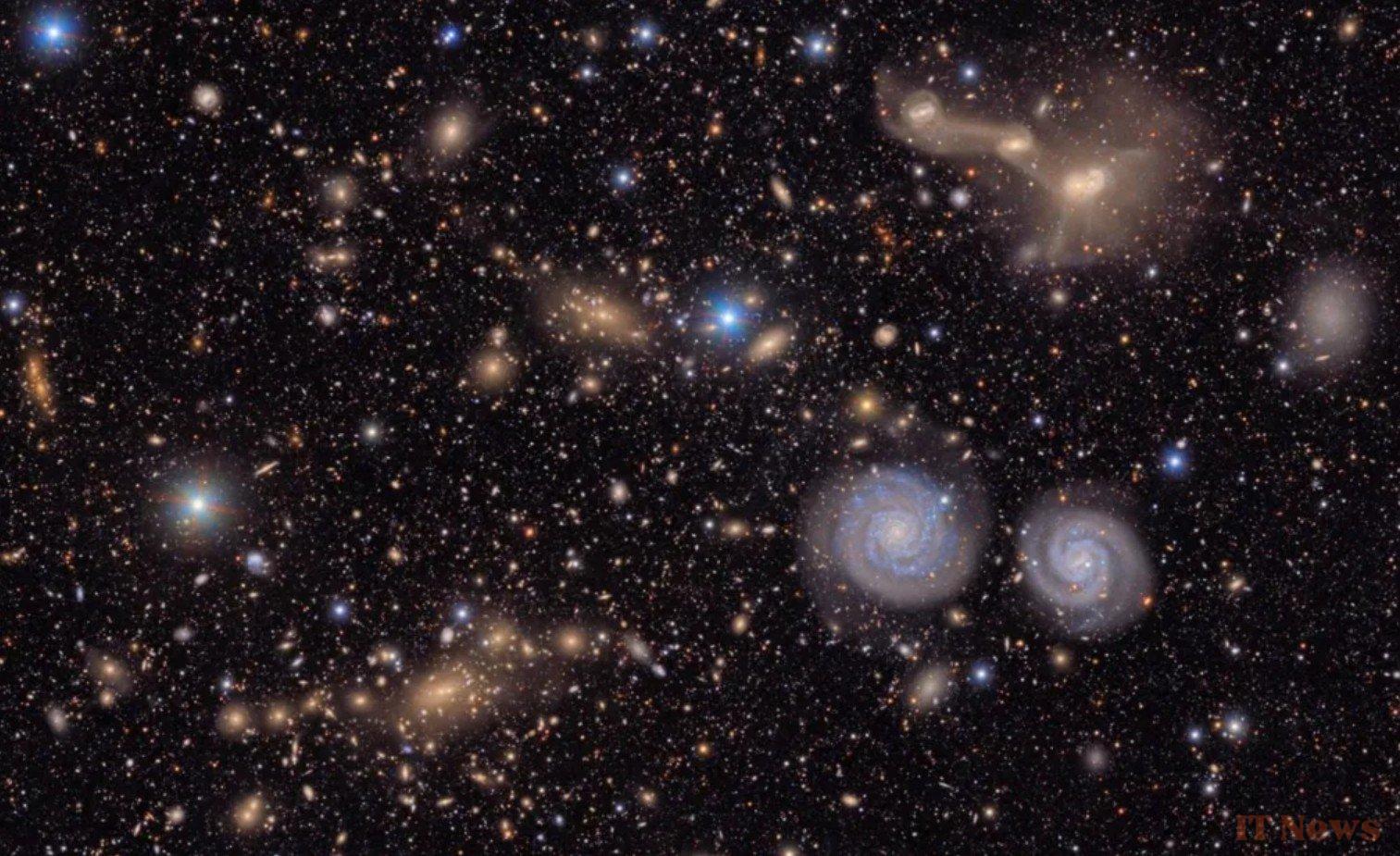After more than 20 years of tireless work, construction of the new Vera C. Rubin Observatory in Chile was finally completed in March 2025. Since then, stargazers have been eagerly awaiting the discovery of this technological marvel. This has now been accomplished with the publication of its very first images, marking the beginning of one of the most promising scientific campaigns in modern astronomy.
The star of this new observatory is a gigantic digital camera, the largest ever built in human history. Its immense three-mirror system, with diameters ranging from 8.4 to 3.4 meters, reflects light onto a set of 189 high-performance sensors. Combined, they offer a stunning 3200 megapixel resolution, but also an extremely wide field of view: each image covers a portion of the sky equivalent to 40 full moons.
First images fabulous
This revolutionary instrument was first turned on last April, producing several images that have just been presented to the general public. The first two are particularly remarkable, as they perfectly illustrate the capabilities of the device.
The first shows the Trifid Nebula and the Lagoon Nebula combined in a single image. These are immense clouds of gas and dust where young stars are being born. The mere act of capturing two such enormous objects in a single image is already impressive, and perfectly demonstrates the camera's ability to cover large portions of the sky — but also, and more importantly, to do so with remarkable precision, which represents an immense engineering challenge.
The second image shows the Virgo Cluster, a dense region populated by many galaxies that interact with each other under the influence of gravity. This image demonstrates the high sensitivity of the optical system, which has an extremely wide dynamic range.
Typically, astronomers have to make tough choices when determining where to focus their next observation. They can focus on very bright objects, but that means missing interesting celestial bodies that are too faint to be observed under these conditions. Conversely, they can increase sensitivity to ensure they detect the latter. But their sensors can then be saturated by the brightest objects; the device is therefore “dazzled” and unable to observe its targets correctly. Often, they are forced to focus on small regions of the sky to avoid these kinds of concessions, because the complexity of the equation increases with each additional pixel.
This observatory, on the other hand, combines the best of both worlds: it is capable of capturing very bright objects and much dimmer ones in a single, very large image, thus saving astronomers from having to make compromises and accelerating the discovery process.
The Hunt for Dark Matter
It is important to point out, however, that these are only preliminary images, assembled primarily for their aesthetic impact, for demonstration and communication purposes. So these aren't really images for scientific purposes... but that's only a postponement.
Because very soon, the Vera C. Rubin Observatory will get to work at a dizzying pace. Every night, the machine will capture up to 1,000 such images in very high resolution, allowing it to scan the entire sky of the southern hemisphere every three to four days for ten years. This will result in an incredible scientific harvest, on the order of 15 terabytes of data per day—an exceptional, even revolutionary resource for astrophysicists.
To understand the impact of these future observations, it's worth going back a bit to provide some context, particularly with regard to the person who gave her name to the observatory.
Indeed, it was named in honor of an American astronomer, known in particular for a remarkable study. This study, which focused on the rotation speed of stars in spiral galaxies, played a fundamental and transformative role in the theory of dark matter, suspected of structuring a large part of the Universe. It is largely thanks to his work that this concept has moved from abstract theory to a real, concrete field of research, with significant repercussions throughout astronomy.
But there is still much to discover about this mysterious entity. Certainly, it is a coherent model that works generally well when it comes to explaining the evolution of the universe on a large scale within the framework of general relativity. But it remains a catch-all term used to describe something completely unknown—a substance or set of phenomena that produce observable gravitational effects, but that no one has ever been able to identify.
This lack of concrete results has prompted many astronomers to ask a critical question: should we prioritize alternative models or continue this hunt for dark matter, accepting the risk of coming back empty-handed?
Today, experts are divided. Some are working on other promising models, such as MOND, which is gaining more and more traction thanks to observations from the formidable James Webb Space Telescope.
But contrary to what we sometimes hear, the dark matter model (ΛCDM) is still far from being rigorously dismissed. A large number of astrophysicists believe that despite these blows, it remains very coherent on many levels, particularly on points that MOND has great difficulty explaining. There is therefore no question of abandoning it for the moment; it is absolutely essential to push the investigation further. And that's precisely the purpose of this new observatory.
Its main mission will be to map our galaxy to capture as much data as possible on its structure and evolution—and, by extension, on the dark matter and energy that may reside there. With any luck, it will be able to collaborate with other telescopes, such as the formidable Euclid, to at least partially lift the veil of mystery that still surrounds these entities.
Euclid: ESA's jewel reports its first data, and the images are sublime
A colossal potential
At the same time, the resulting images can also be used in other types of work. They will, for example, help catalog millions of poorly documented or completely unknown galaxies, as well as more than 5 million new asteroids and comets—some of which are potentially threatening to our planet.
Ultimately, specialists expect Rubin to increase the number of known objects in the solar system and beyond by an order of magnitude or more, and to do so very quickly after the start of operations!
We can therefore expect him to contribute to many groundbreaking projects during his ten-year observing campaign. See you in a few months, when the first scientific data are published, for the start of this great adventure which promises to significantly advance our understanding of our galaxy as well as the entire Universe.






0 Comments